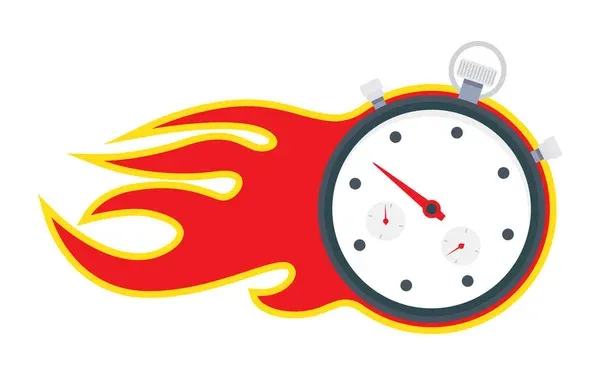Improving Shopify Store Page Speed: Practical Tips and Strategies

Slow loading times can lead to frustrated customers and lost revenue. In fact, site speed plays a major role in both user experience and search engine rankings. To ensure your online store thrives, optimizing your Shopify site speed should be a top priority.
In this blog post, we’ll discuss practical tips and strategies to help you improve your Shopify store page speed, from understanding key metrics like Core Web Vitals to implementing actionable changes that can lead to more performance features a smoother shopping experience for your customers.
Understanding Shopify Store Page Speed
Before diving into the tips, let's start with a quick overview of some essential terms and why they matter for your store slow website's performance.
- Core Web Vitals: These include metrics like first input delay (FID), cumulative layout shift (CLS), and first contentful paint (FCP). They measure how quickly your page becomes interactive, how stable it is during loading, and how soon users can see the content.
- Shopify Speed Score: This is an indicator of your store's performance, graded by Google PageSpeed Insights. A higher speed score means your site is faster and more optimized.
Why does your store's shopify speed score matter? Well, a good Shopify speed score can lead to better search engine rankings, higher conversion rates, and improved customer satisfaction. Keeping your speed score in mind will guide you in making beneficial changes.
Practical Tips and Strategies for Improving Shopify Store Page Speed
Let's jump into actionable strategies that can help you enhance your Shopify store's performance and speed.
- Optimize Images: Large, unoptimized images can slow down your site significantly. Compressing images and reducing their size can improve performance without sacrificing quality. Consider lazy loading images so that only images in the viewport load initially.
- Streamline Third-Party Integrations: Third-party apps can bring functionality to your store, but they can also add to loading times. Review your apps and remove any unused or unnecessary ones. Additionally, streamline tracking codes and use Google Tag Manager for efficient script management.
- Reduce HTTP Requests: Each HTTP request made by your Shopify store adds to your loading time. Reduce these by minimizing and combining JavaScript and CSS files, and eliminating render-blocking JavaScript.
By focusing on these key areas, you can start seeing improvements in your store's speed and overall website performance now. Stay tuned for the next set of tips and strategies!
Leverage Content Delivery Networks (CDNs)
A Content Delivery Network (CDN) can significantly improve your site's loading speed by caching web pages and delivering your site's content from servers closer to your customers.
- Cache content: CDNs cache your store's content (images, scripts, etc.) across multiple servers around the world, reducing loading times for customers no matter where they're located.
- Deliver content locally: By serving content from locations near your customers, CDNs decrease latency and boost site performance.
- Optimize load times: CDNs help minimize the time it takes for pages to load, enhancing the user experience and overall store speed.
By using a CDN, you can make your online store faster and more reliable for customers around the globe.
Improve Web Fonts and Static Resources
Choosing the right fonts and optimizing static images and resources can lead to noticeable improvements in your store's speed and user experience.
- Choose system or optimized web fonts: System fonts tend to load faster because they are already available on most devices. Alternatively, you can choose web fonts that are optimized for performance.
- Cache static resources: Caching static resources like images, scripts, and stylesheets can help improve loading times for repeat visitors.
By focusing on these aspects, you can create a smoother and more enjoyable shopping experience for your customers while also boosting your store's speed.
Enhance Shopify Theme
Your Shopify theme plays a crucial role in your store's speed and performance. Customizing your shopify stores theme for speed optimization can lead to significant improvements.
- Select a lightweight, mobile-optimized theme: Choose a theme designed for speed and mobile responsiveness. Lightweight themes tend to have cleaner code and faster load times.
- Work with your development team: Collaborate with your development team to customize your theme for better speed and performance.
- Remove unnecessary features: Streamline your theme by removing any unused or unnecessary features that might be causing slowdowns.
By enhancing your Shopify website and theme, you can provide a faster and more user-friendly shopping experience for your customers.
Test and Monitor Performance
Consistently testing and monitoring your own Shopify sites and store's performance is essential for ongoing optimization and ensuring your site maintains good speed.
- Use testing tools: Tools like Google PageSpeed Insights and Google Lighthouse can help you identify areas where your site needs improvement and provide specific suggestions.
- Monitor performance scores: Keep an eye on your site's performance scores over time to track improvements and spot any potential issues.
- Regularly check speed scores: Check your Shopify speed score regularly to make sure your site is maintaining an optimal performance level.
By staying vigilant and using testing tools to monitor your store or website's performance, you can ensure your site remains fast and user-friendly.
Optimize Your Shopify Store's Speed with SEOPro
To streamline your shopify speed optimization efforts, consider using SEOPro. This comprehensive app helps you identify and address performance issues, optimize your content, and improve your store's speed and search engine rankings. With SEOPro, you can ensure that your Shopify store remains competitive and efficient.
Remember to regularly test and monitor your store's speed using tools like Google PageSpeed Insights and Google Lighthouse. By staying proactive and consistently assessing your site's performance, you can continue to make improvements and maintain an optimal website speed score.
Applying the practical tips and strategies discussed in this blog post, along with leveraging SEOPro, can help you stay ahead of the competition and ensure your Shopify store delivers an enjoyable and efficient shopping experience.





